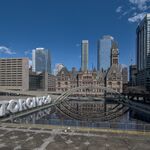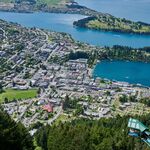slapped_chicken
New Member
This is interesting given that the highest ridership year for Line 2 is 535K PPD in 2014.
What's also interesting is that ridership levels are only 23K PPHPD during the peak hours on Line 2...Given how insanely difficult it can be getting on a train during rush hours on Line 2, perhaps it's time we rethink what ridership level is deemed appropriate for a subway line in this city.
Line 1 is also serving 850k PPD. There is more daily ridership on that single line than the entire systems of DC or Chicago. Toronto seriously has one overcrowded and stretched-thin subway system. Line 2's ridership seems to be commonly overlooked but it's also one of the highest for a North American subway line. I believe a modern subway line with high capacity automated trains should be able to push up to 1000k PPD; but of course Line 2 isn't up to that standard. Could ATC installation + new trains (apparently, they are going with a newer train that isn't the TR for Line 2) reasonably accommodate ridership beyond 2050? Also, while they considered OL and Line 2 extension, did they consider riders using Line 5? I expect the western portion of Line 5 will offer substantial relief by intersecting with N-S bus routes that would normally feed into Line 2, and many riders north of Eg would opt for Line 5. In the east, the lines converge, and there's also slower surface-running so it may be a less attractive alternative.







